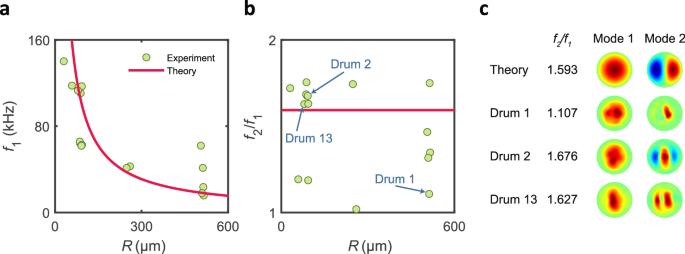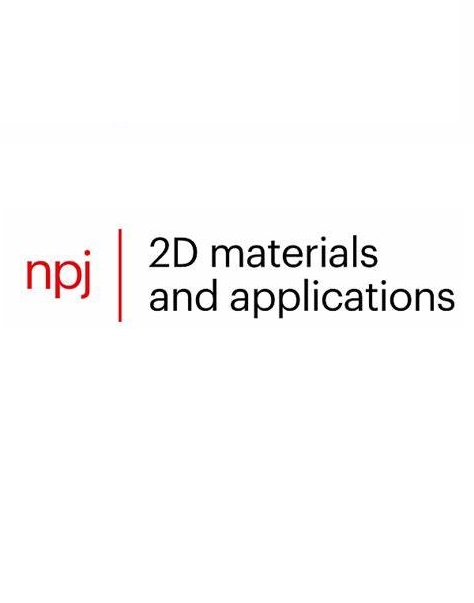通过模形成像量化超大型石墨烯鼓中的应力分布
IF 8.8
2区 材料科学
Q1 MATERIALS SCIENCE, MULTIDISCIPLINARY
引用次数: 0
摘要
二维材料制成的悬浮鼓具有传感应用的潜力。然而,这些应用的产业化受到了设备与设备之间显著差异的阻碍,这种差异可能是由制造过程引起的不均匀应力分布造成的。在此,我们介绍一种方法,通过激光多普勒测振仪(LDV)测量的机械共振频率和相应的模态振型来确定应力分布。为避免 LDV 光学分辨率带来的限制,我们利用制造工艺制造出直径达 1000 μm 的超大石墨烯鼓。我们通过迭代程序解决了 Föppl-von Kármán 板模型的逆问题,从而从实验数据中获得了鼓内的应力分布。结果表明,通常使用的均匀预张力假设高估了预应力值,比平均应力超出 47% 以上。此外,我们还发现重建的应力分布是双轴的,这可能源于传递过程。通过引入的方法,我们可以根据鼓式谐振器的机械响应估算其张力分布,从而为将所使用的制造工艺与由此产生的设备性能联系起来铺平道路。本文章由计算机程序翻译,如有差异,请以英文原文为准。

Quantifying stress distribution in ultra-large graphene drums through mode shape imaging
Suspended drums made of 2D materials hold potential for sensing applications. However, the industrialization of these applications is hindered by significant device-to-device variations presumably caused by non-uniform stress distributions induced by the fabrication process. Here, we introduce a methodology to determine the stress distribution from their mechanical resonance frequencies and corresponding mode shapes as measured by a laser Doppler vibrometer (LDV). To avoid limitations posed by the optical resolution of the LDV, we leverage a manufacturing process to create ultra-large graphene drums with diameters of up to 1000 μm. We solve the inverse problem of a Föppl–von Kármán plate model by an iterative procedure to obtain the stress distribution within the drums from the experimental data. Our results show that the generally used uniform pre-tension assumption overestimates the pre-stress value, exceeding the averaged stress obtained by more than 47%. Moreover, it is found that the reconstructed stress distributions are bi-axial, which likely originates from the transfer process. The introduced methodology allows one to estimate the tension distribution in drum resonators from their mechanical response and thereby paves the way for linking the used fabrication processes to the resulting device performance.
求助全文
通过发布文献求助,成功后即可免费获取论文全文。
去求助
来源期刊

npj 2D Materials and Applications
Engineering-Mechanics of Materials
CiteScore
14.50
自引率
2.10%
发文量
80
审稿时长
15 weeks
期刊介绍:
npj 2D Materials and Applications publishes papers on the fundamental behavior, synthesis, properties and applications of existing and emerging 2D materials. By selecting papers with the potential for impact, the journal aims to facilitate the transfer of the research of 2D materials into wide-ranging applications.
 求助内容:
求助内容: 应助结果提醒方式:
应助结果提醒方式:


